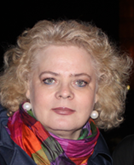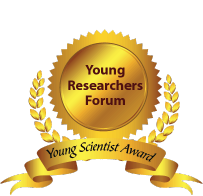
Marina Nosik
I.I. Mechnikov Research Institute of Vaccines and Sera ,Russia
Title: Aged people with newly diagnosed HIV
Biography
Biography: Marina Nosik
Abstract
The growing number of people aged 50 years and older, who are living with HIV becomes a significant public health problem. Worldwide an estimated 3.6 million people aged ≥50 years are HIV-infected. However still few data are available regarding newly diagnosed HIV and contexts of HIV-infection among older adults. The goal of the study was to obtain data regarding the socio-demographic and clinical characteristics of people aged 50 and over, who were newly diagnosed with HIV. Data were collected over the period of 2015-2016 years from a large medical center, Department for treatment of TB/HIV patients. Epidemiological and clinical data were collected and analyzed as part of a descriptive study.Out of 570 HIV positive patients who attended the clinic over 2015-2016 years 410 patients were newly diagnosed (ND) with HIV. The most prevalent age group among ND was 30-39 years (88,9%). The ratio of persons aged ≥50 among ND was 11,2%(n=46); 54,3% were males. Out of 46 newly diagnosed aged people 43,5%(n=20) individuals were of age ≥56 years. Out of aged ND 34,8%(n=16) patients had CD4 cell count below 350 cells/mm³ and 43,5%(n=20) had CD4 cell count below 200 cells/mm³. Median CD4 cell count in group 23-49 years was 329 cells/mm³(57÷929 cells/mm³). There were differences in HIV risk factors in the older compared to younger age groups: injection drug use(IDUs) was the risk factor identified for 46,2% of the age group 23-49 years versus 17,1% in older group; heterosexual route of HIV transmission was 51,9% in group of 23-49 years and 82,9% of those age ≥50; men who have sex with men accounted for 1,9% of the younger group and none in the older.Thus a very high proportion of individuals aged ≥50 are diagnosed with HIV at an advanced stage of disease. Also a rather alarming finding is that the predominant mode of HIV transmission in older people is heterosexual contacts (82,9%) comparing with younger people who acquired HIV both through needle-sharing and heterosexual contacts. It is essential for healthcare providers to implement special education programmes targeting older population, including implementation of HIV screening guidelines in primary care settings.

